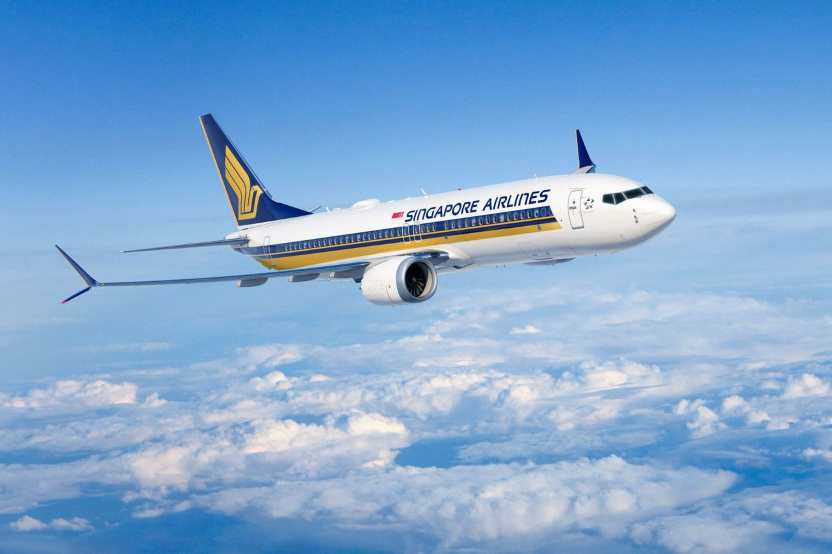Published on
August 30, 2025
UK unites with Australia, Philippines, Hong Kong, Thailand, Indonesia, and more in defining Singapore Airlines’ top travel connections across Asia and beyond in 2025, as the airline continues to expand its global network. Bolstered by a well-established hub at Singapore Changi Airport, Singapore Airlines stands out as one of the premier carriers owing to its well-planned route network linking major cities in Asia, Europe, and Australia. The airline’s fleet diversity and service frequency ensures that Singapore’s gateway hub status is complemented by Singapore Airlines’ 2025 route offerings. These plans indicate a sustained 2025 demand for regional business travel as well as long-haul travel out of Singapore.
Singapore Airlines, the flag carrier of Singapore and a five-time Skytrax World’s Best Airline winner, continues to stand tall in 2025 as one of the most respected carriers in global aviation. Operating from its world-class hub at Singapore Changi Airport, the airline has built a highly strategic network that not only serves its home market but also positions Singapore as one of the most important connecting gateways between Asia, Europe, Australia, and beyond. In 2025, the UK unites with Australia, Philippines, Hong Kong, Thailand, Indonesia, and more in defining Singapore Airlines’ top travel connections. With a robust mix of high-frequency regional services and premium long-haul flights, the airline’s network showcases its ability to cater to both business and leisure travelers. Changi Airport serves as a central hub for millions of passengers connecting between these key regions, further cementing Singapore Airlines’ role as a leading global carrier.
While awards highlight the brand’s reputation for quality and service, it is the carrier’s carefully structured route map that truly tells the story of how Singapore Airlines dominates regional skies and long-haul markets. Its ten busiest routes of 2025 reveal strong patterns of business travel, leisure demand, and the power of Changi as a connector for millions of international passengers.
1. Singapore – Jakarta: The Crown Jewel of the Network
No route defines Singapore Airlines’ dominance better than Singapore–Jakarta, which leads with nine daily flights and nearly 17,500 weekly seats. At just 90 minutes in the air, this short-haul link is one of the most significant city pairs in Southeast Asia.
Jakarta, Indonesia’s business hub, generates enormous corporate travel demand. At the same time, many Indonesian travelers rely on Singapore for connections to long-haul destinations in Europe, North America, and Australia. The fleet mix here is revealing: two Boeing 777-300ERs and seven Airbus A350-900s handle daily operations, offering between 2,500 and 3,000 seats every day.
2. Singapore – Denpasar: Bali’s Timeless Pull
In second place comes Denpasar (Bali), one of Asia’s most beloved leisure destinations. Singapore Airlines operates six daily flights using the Boeing 787-10, creating a uniform and efficient schedule with over 14,000 weekly seats.
Bali’s appeal is not limited to holidaymakers from Singapore. The island is a major stop for European, North American, and Asian travelers transiting through Changi. With each aircraft offering 337 seats, this single route alone provides almost 2,000 seats per day. The standardized fleet deployment underscores Singapore Airlines’ operational efficiency while maintaining passenger comfort.
3. Singapore – Bangkok: Hub Versus Hub
The Bangkok route takes third place, with six daily services and over 13,000 weekly seats. The flights are split between four Boeing 787s and two A350-900s, striking a balance between capacity and flexibility.
Bangkok remains one of Southeast Asia’s busiest hubs, with Thai Airways providing direct competition. Yet the sustained demand for six daily Singapore Airlines flights shows that both carriers can thrive on this popular business and leisure corridor.
4. Singapore – Kuala Lumpur: Shuttle in the Sky
Ranking fourth is Singapore–Kuala Lumpur, a short hop of just 45 minutes. With 54 weekly flights, this city pair has the highest frequency in the network. The mix includes 28 weekly Boeing 737 MAX-8 flights and 26 weekly A350-900 services, combining to offer more than 11,500 weekly seats.
For business travelers, this is effectively an air shuttle. The use of narrowbodies highlights the constant commuter traffic, while the widebody services provide options for premium and connecting passengers.
5. Singapore – Shanghai: China’s Financial Link
Shanghai holds fifth place with five daily flights and nearly 11,400 weekly seats. The route is a showcase of fleet diversity, with one A380, two A350-900s, and daily Boeing 787 and 777-300ER services.
Shanghai is China’s financial capital, making this a vital market for premium travelers. The presence of the A380 reflects Singapore Airlines’ strategy to capture high-yield demand while offering varied capacity for different passenger segments.
6. Singapore – Manila: Connecting the Philippines
In sixth place is Manila, with five daily flights totaling over 10,700 weekly seats. Operated by a mix of two 787s and three A350-900s, the route is key for both leisure and connecting traffic.
Many Filipino travelers prefer transiting through Singapore for onward connections to Australia and New Zealand, markets that Singapore Airlines serves with far greater frequency than Manila’s direct options.
7. Singapore – Sydney: Australia’s Gateway
The long-haul presence of Singapore Airlines shines with Sydney, ranking seventh with four daily flights and 10,563 weekly seats. The lineup includes two daily A380s, a 777-300ER, and an A350-900.
Australia is a cornerstone market for the airline. For many Australians, Singapore Airlines represents a premium alternative to Qantas, with superior onward connections through Changi. Deploying the A380 to Sydney reflects the carrier’s focus on premium travelers.
8. Singapore – London Heathrow: Europe’s Stronghold
The London Heathrow route ranks eighth, with four daily flights and just over 10,000 weekly seats. The schedule includes two A380s and two 777-300ERs, while daily Gatwick flights added in 2025 expanded the airline’s UK footprint.
London serves as a European gateway, with passengers connecting through Singapore to reach Australia, New Zealand, and Asia. It remains one of the airline’s most profitable routes due to its strong corporate and premium travel demand.
9. Singapore – Hong Kong: Enduring Regional Demand
Despite shifts in Hong Kong’s aviation role, Singapore Airlines maintains five daily flights on this route, providing 9,632 weekly seats. The schedule includes four A350-900s and a single 777-300ER.
The strong frequency highlights the enduring strength of point-to-point demand between the two financial hubs. Both leisure and corporate travelers keep this city pair firmly in the top 10.
10. Singapore – Melbourne: Australia’s Cultural Capital
Rounding out the list is Melbourne, with five daily flights and more than 9,300 weekly seats. The route is served by three A350-900s and two 777-300ERs.
Much like Sydney, Melbourne plays an essential role in the airline’s Australia strategy. Singapore Airlines positions itself as the premium option for travelers connecting to Europe or North America without routing through Middle Eastern hubs.
Singapore Airlines’ Network and Fleet Strategy
Beyond the top ten, the broader network paints a clear picture of Singapore Airlines’ philosophy. The airline flies to 120 international destinations across 46 countries, balancing high-frequency short-haul services with premium long-haul links.
Its fleet of 163 aircraft includes industry-leading choices such as the A380, Boeing 787-10, and ultra-long-range A350-900s, all tailored for efficiency and passenger experience. By combining cutting-edge aircraft with service excellence, Singapore Airlines has turned Changi into one of the world’s most efficient hubs.
Singapore Airlines is far more than a decorated carrier with multiple awards to its name. Its success lies in the smart structuring of its route network, the balance between regional dominance and long-haul premium capacity, and the ability to leverage Changi’s geographic advantage.
With subsidiaries like SIA Engineering and Singapore Airlines Cargo, plus membership in Star Alliance, the airline has extended its reach and revenue streams far beyond passenger services.
UK unites with Australia, Philippines, Hong Kong, Thailand, Indonesia, and more in defining Singapore Airlines’ top travel connections across Asia and beyond in 2025, reflecting the airline’s strategic growth and Changi Airport’s pivotal role as a global hub. With high-frequency regional services and premium long-haul flights, Singapore Airlines continues to strengthen its network, serving both business and leisure travelers connecting across continents.
The busiest routes of 2025 show the perfect blend of business, leisure, and connecting traffic. Together, they demonstrate why Singapore Airlines continues to be regarded not just as an airline, but as a global aviation leader.



